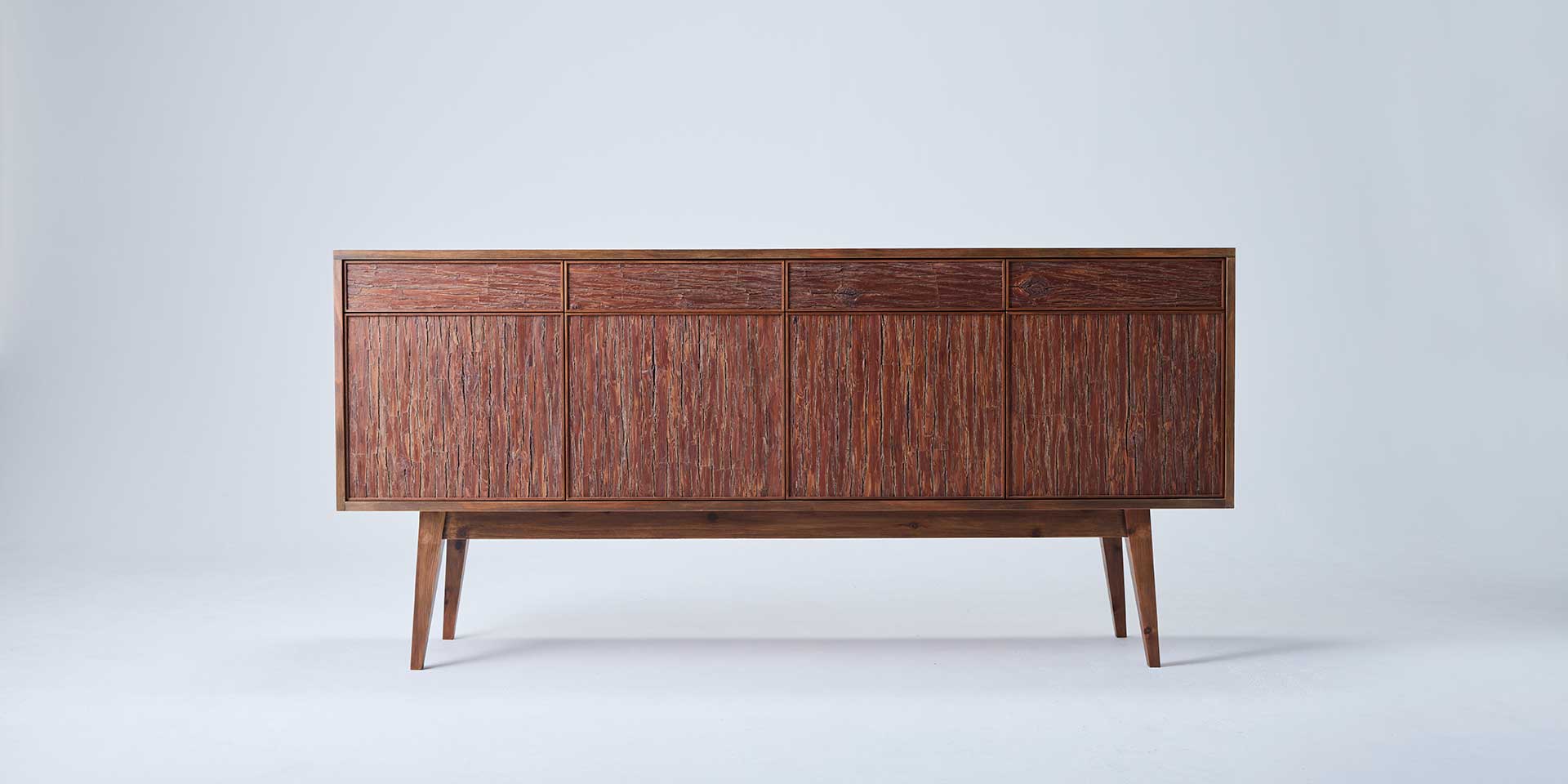

Takanokagu
Takanokagu specializes in creating furniture and art using cedar bark. Cedar bark is known for its three-dimensional, robust, and rugged texture, which adds a unique charm to the material. It was once widely used for its high water resistance in applications like roofing, fences, and exterior walls. However, most of it is now discarded. Takanokagu aims to showcase the untapped potential of this precious material by crafting products that bring out its new and distinctive allure, both domestically and internationally.
Takanokagu specializes in creating furniture and art using cedar bark. Cedar bark is known for its three-dimensional, robust, and rugged texture, which adds a unique charm to the material. It was once widely used for its high water resistance in applications like roofing, fences, and exterior walls. However, most of it is now discarded. Takanokagu aims to showcase the untapped potential of this precious material by crafting products that bring out its new and distinctive allure, both domestically and internationally.
Bornfild
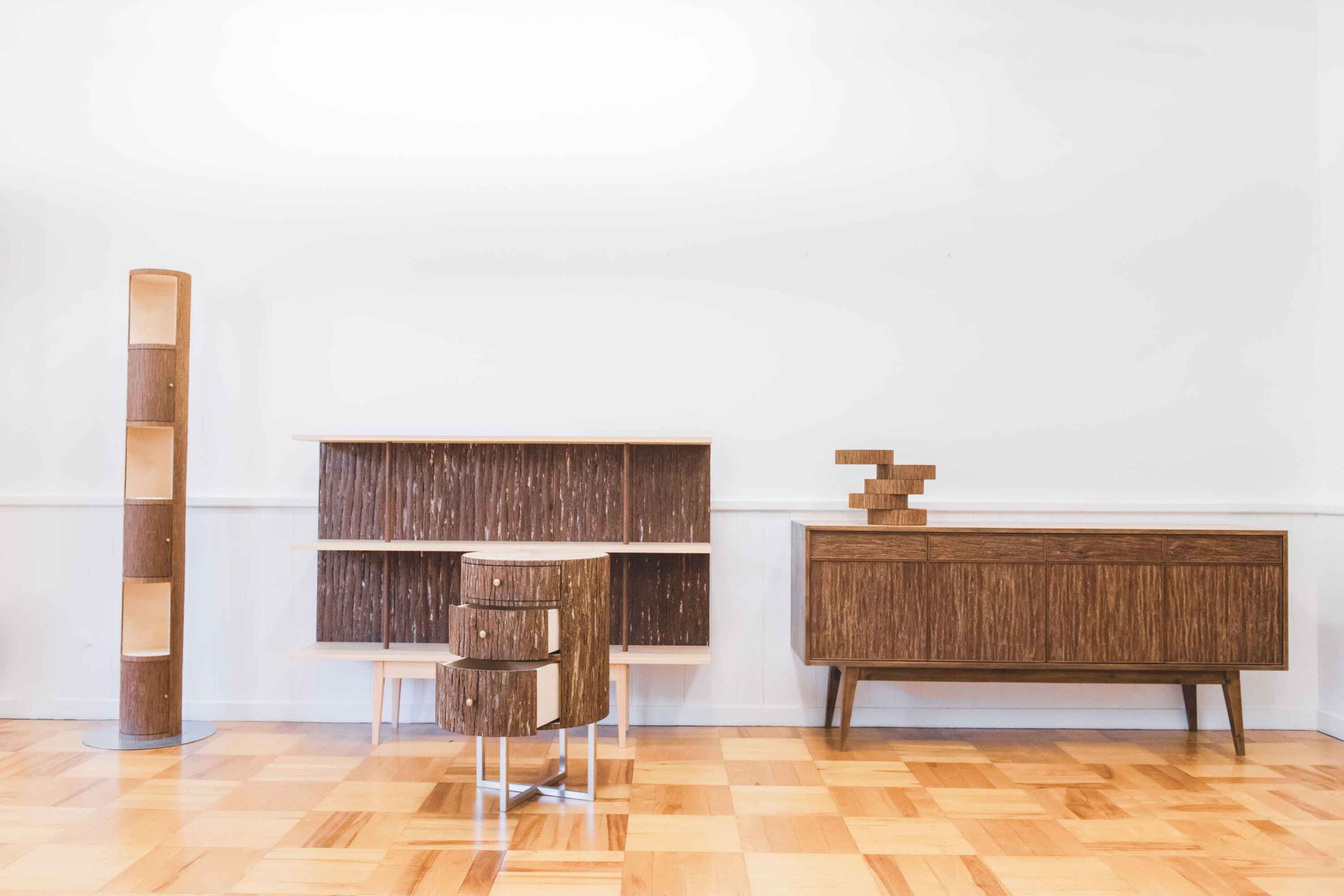
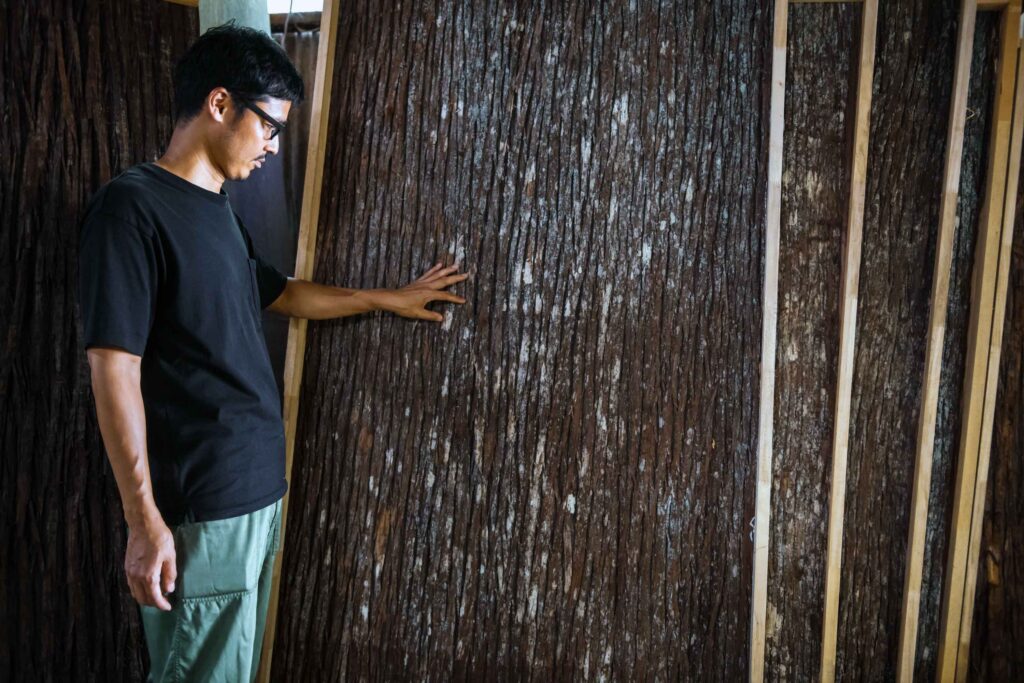
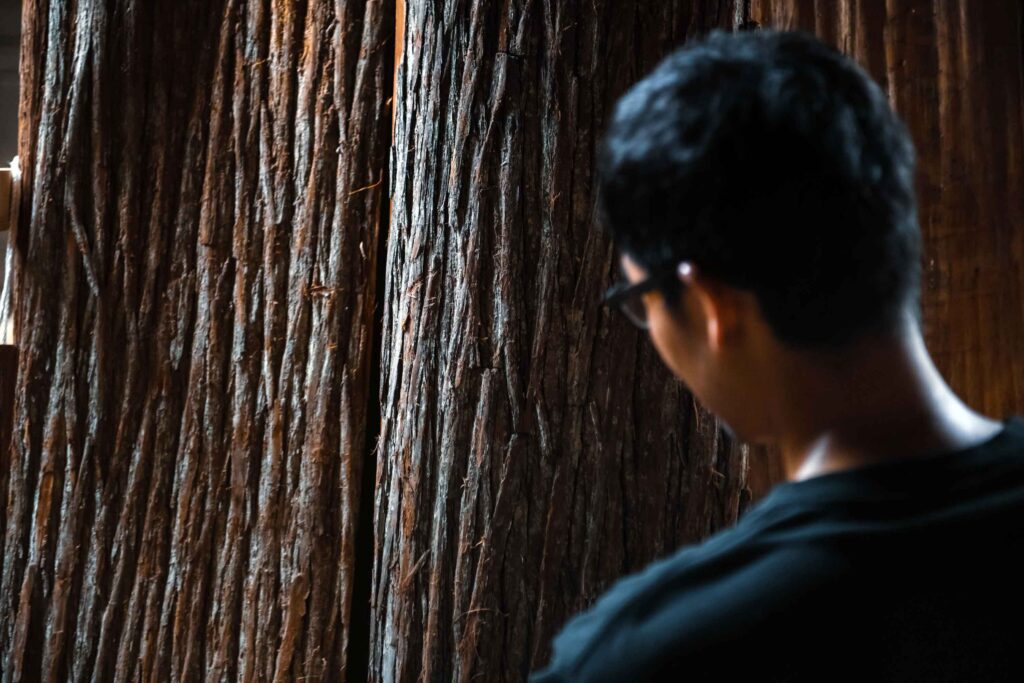
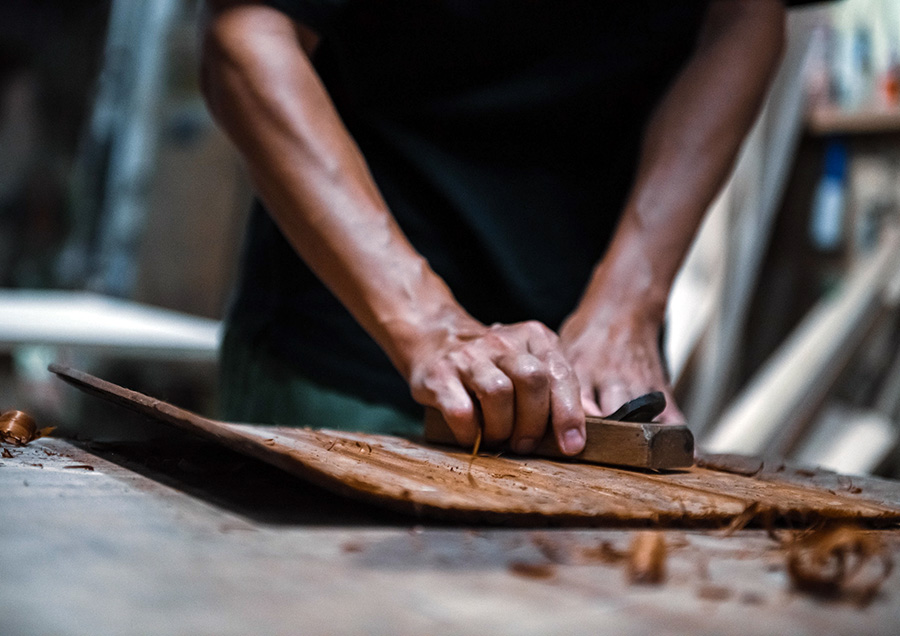



Interview
I want to promote the potential of using cedar bark in furniture and art.”
Takanokagu Daisuke Takano
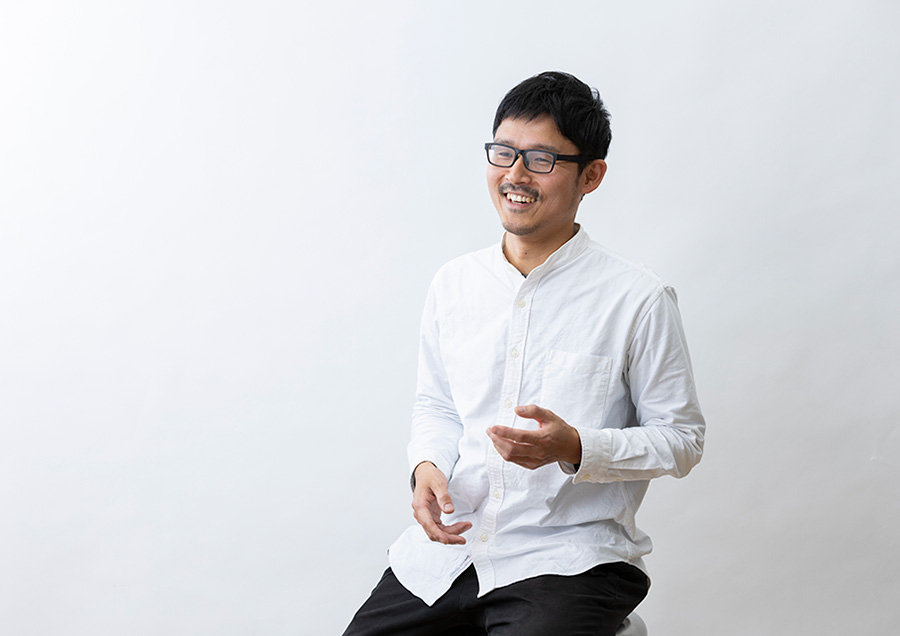
The three-dimensional, robust, and rugged roughness are the charms of cedar bark
ーーThe use of cedar bark in furniture is quite distinctive.
Takano:Since coming to Yoshino, I’ve been creating furniture and art using cedar bark. Until now, nobody had used cedar bark in furniture, but I was deeply captivated by the texture and expression of this material. Cedar bark has a pronounced three-dimensional quality, a robust and rugged texture, and a roughness that adds to its charm. Each piece of bark is unique, and even the same type of bark can have different characteristics, which makes it fascinating.
ーーCould you tell us how you first discovered cedar bark?
Takano:I visited the office of a renowned wood dealer near my home, and they had used cedar bark on the ceiling. It was during that visit that I discovered the appeal of cedar bark, and that’s when I began working with it. Cedar bark used to be a more popular material in the past. It was highly resistant to water, so it was widely used for roofs, fences, and exterior walls. However, over time, its use declined, and nowadays, it’s only used for the renovation of some temples, shrines, and old traditional houses. This is because harvesting cedar bark is only possible during the hottest days of midsummer, and the steep slopes of Yoshino’s mountains make it a labor-intensive process. Combined with the low demand, I believe that most cedar bark is now discarded.
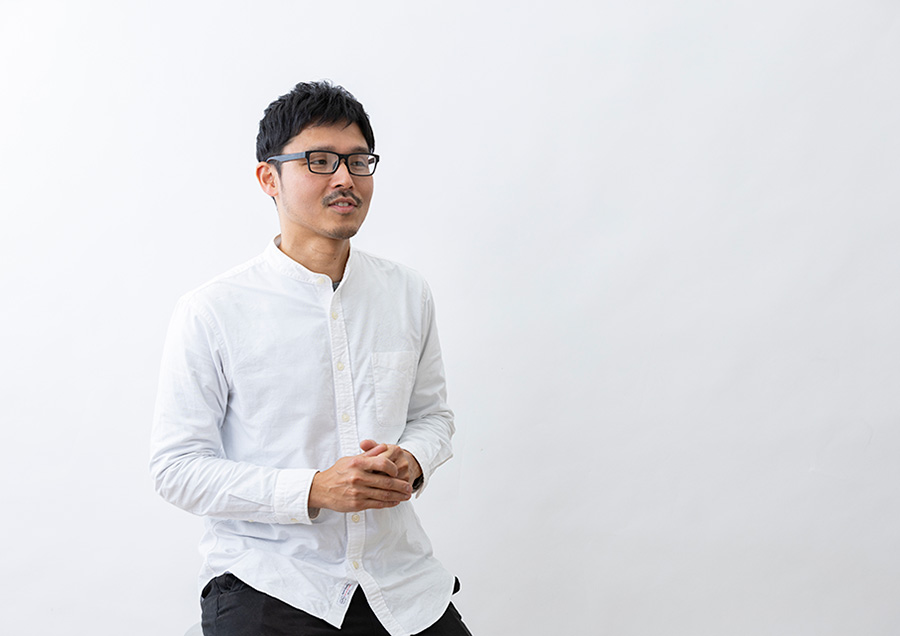
ーーWhy is cedar bark only harvested in midsummer?
Takano:Trees are basically felled in the cold season, but cedar bark is much easier to peel in mid-summer when the tree is absorbing a lot of water. If a cut is made immediately after the tree is felled and a spatula is inserted between the bark and the trunk, the bark can be peeled off smoothly, just like peeling cinnabar. After that, the harvested bark is piled up in the mountains, surrounded by sheets, and left to ferment to kill any insects. The fermentation process requires warm weather, which is why it’s done in the hot season.
ーーWhere do furniture and art pieces made from cedar bark fit best in terms of location or situation?
Artboards are the main focus of our work, and they are quite powerful pieces. While we have special sizes like 1.5 meters or 2 meters, they are too large for residential spaces. We envision them being displayed in commercial spaces, offices, or large lobby areas with ample wall space. When we participated in a support project in Nara and sold our artboards in Singapore, a customer placed one in the entrance of their apartment building, which was a fascinating discovery for us. Interestingly, I designed the artboards with the grain of the cedar bark running vertically, but the customer chose to display it horizontally. It was a delightful surprise. We also create trash cans that appear like logs by adding bark to them. While artboards use cedar bark in a flat manner, I want to explore creating pieces that showcase the natural qualities of cedar bark even more when used in a rounded fashion.
Discovering the Beauty of Cedar and Cypress and the Local Community’s Passion for Forestry After Relocating
ーーI heard that you originally worked in design rather than furniture making.
Takano:After graduating from university, I worked in graphic design. If I had been completely satisfied with that job, I probably wouldn’t have changed careers. However, I felt that it wasn’t something I wanted to do for my entire life. Around that time, I had a child, and when we moved to a spacious house, I thought it might be interesting to try making some furniture. I started by buying wood from a home improvement store and began crafting. As I continued working on it every week, I started to think, “This could be something.” Graphic design primarily deals with flat surfaces, so I found it fascinating to create three-dimensional furniture pieces. Additionally, when I was doing graphic design, I was involved in major advertising projects where various professionals contributed to the final product. In contrast, with furniture making, I could start from scratch and create everything on my own until it was a finished piece ready for delivery. That aspect was also appealing to me.

ーーCould you please tell us what led you to move to Yoshino?
Takano:The house I currently live in was my grandparents’ house. I had always wanted to start an independent furniture-making venture in the countryside, so I decided to move into this vacant house. At that time, I had no knowledge of cedar bark, and my decision to come here wasn’t specifically driven by a desire to work with cedar or cypress. Honestly, I felt that any place with the right environment for furniture making would do. Furthermore, I had an image that cedar and cypress, when used in furniture, tended to give it a more traditional, Japanese-style appearance, which I didn’t consider particularly stylish. However, living here, I witnessed the dedication of the people around me to preserve forestry and pass it on to the next generation. Their passion inspired me, and gradually, I started using cedar and cypress in my work. The first piece of furniture I made using cedar bark was a sideboard. Cedar bark has a relatively dark color, so to create contrast, I crafted the main body from white cypress and used the dark cedar bark for the doors. Over time, the notion of it looking too traditional has disappeared.
ーーHow do you find living here?
Takano:My wife and I wanted to raise our children in a natural environment, and with the convenience of online shopping, the lack of nearby stores was not a significant issue, so the transition to rural life was relatively smooth. In my case, when I moved here, I was received as “the grandchild returning home,” so I blended into the community quite easily.
ーーFinally, could you tell us about your future plans and what you’d like to challenge?
Takano:I want to expand the possibilities of furniture and art made from cedar bark even further. Firstly, I don’t think many people are aware of the existence of cedar bark, so I’d like not only people in Japan but also people from overseas to see and learn about it, saying, “This is something unique.” If we don’t spread the word, there might come a time when there are no longer people harvesting cedar bark, and even if someone wants it, they won’t be able to get it. That’s why I’m determined to promote its existence, even if it’s just a little.
Products
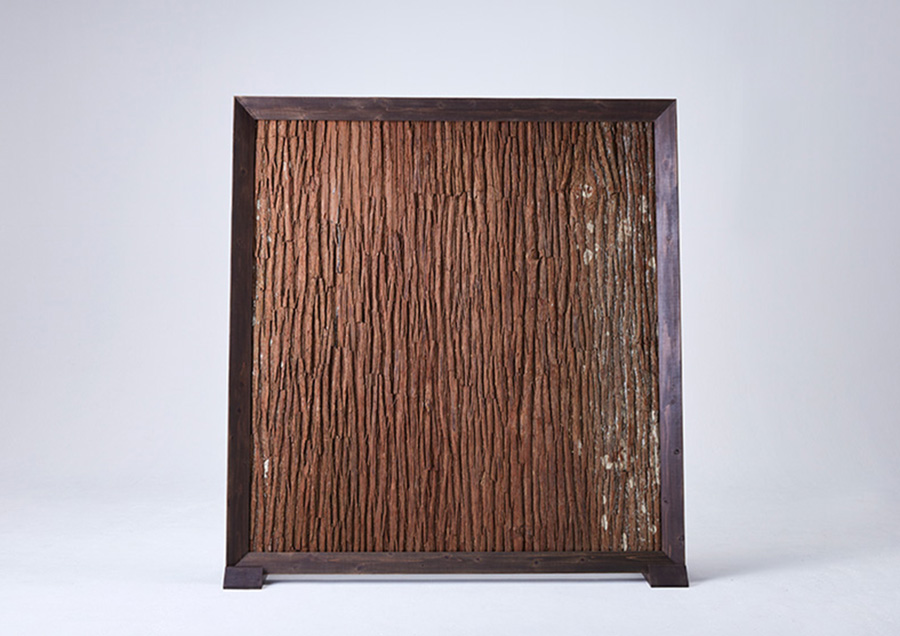
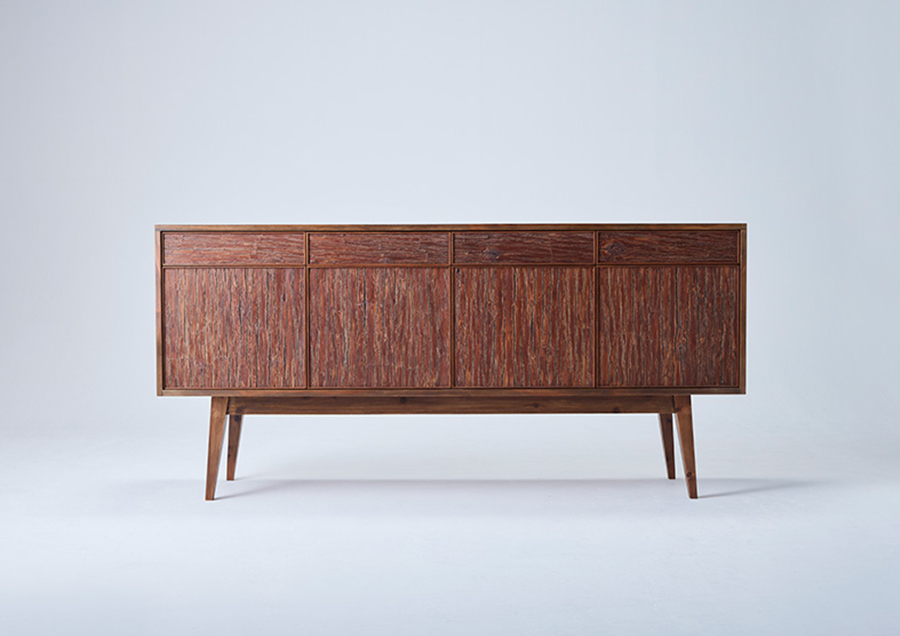
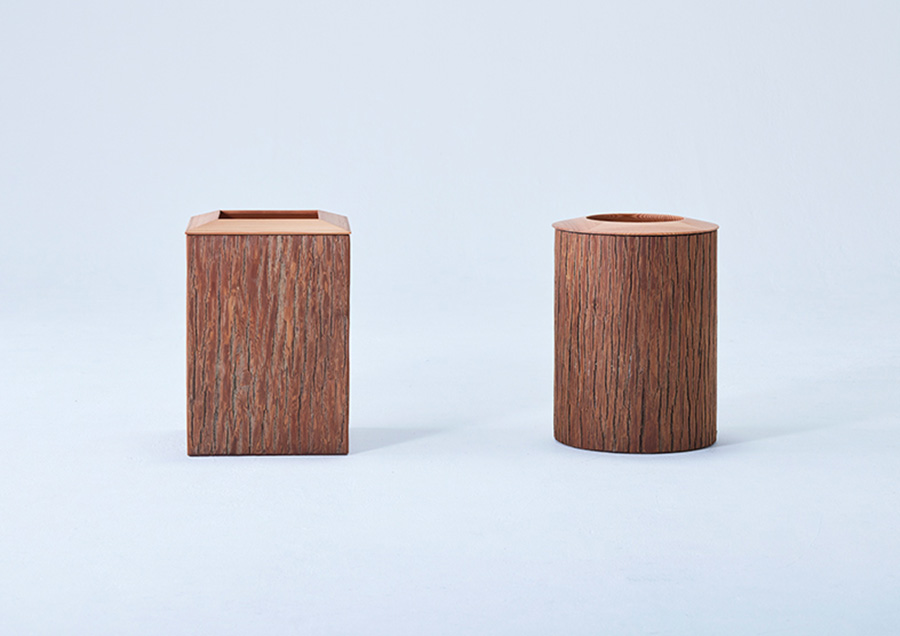
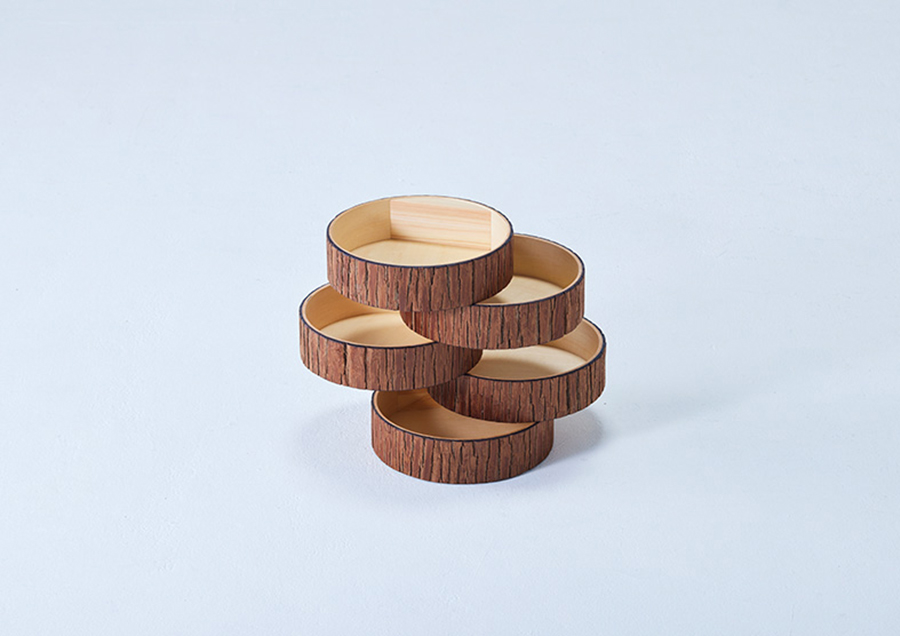
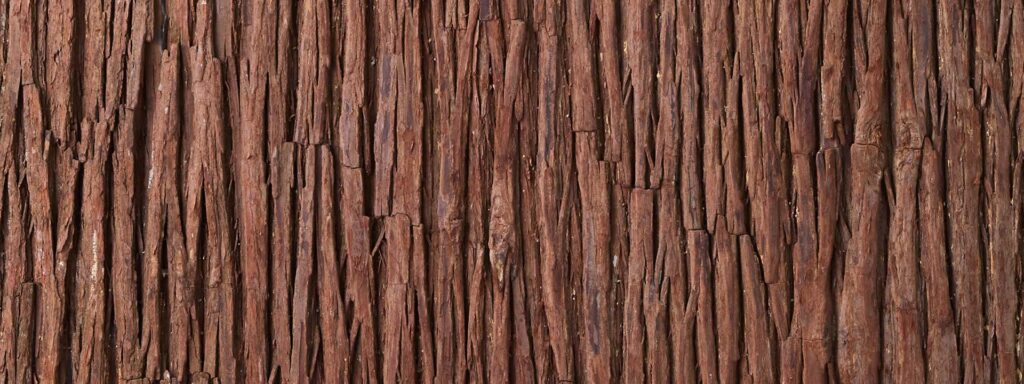

Company Info.
| Name | Takanokagu Co., Ltd |
| Location | 972 Hirohashi, Shimoichi-cho, Yoshino District, Nara 638-0015, Japan |
| HP | http://takanokagu.com |